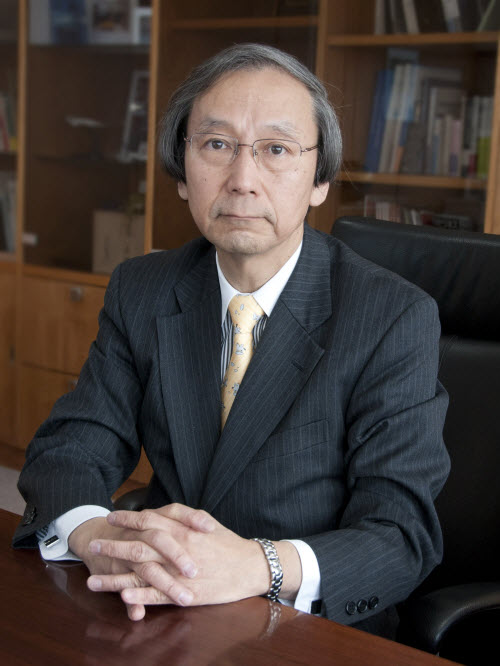
Nuclear energy has been heatedly debated recently, losing favor in the public eye after the Fukushima meltdown. But Asia's growing demands for power require that the nuclear option be considered as part of a clean, affordable energy mix that supports economic growth and achieves energy security.
Nuclear power contributes to lowering greenhouse gas emissions. According to estimates from Asia's Energy Challenge report by the Asian Development Bank, if such power were phased out of the region's energy mix, carbon dioxide emissions from Asia's power sector would be 8-13% higher in 2035.
The rapid expansion of nuclear power generation in Asia is based on its advantages in energy security and global warming prevention, along with the vital need for nuclear power as an economically efficient generation option for economic growth. In fact, the total installed capacity of nuclear power generation in Asia is expected to rise by at least a factor of two to four from the present level by 2035.
Countries in the region, including Japan, need to seriously consider how nuclear power fits into their energy mix to comfortably support sustainable energy security.
After Fukushima
Trust in nuclear safety declined significantly after Fukushima. This calamity had a devastating impact, leading many to question the safety of this power source.
It also changed Japan's energy policies. The government's focus has always been on energy security, the environment and economic efficiency. Now, safety and economic impact -- specifically around the need to obtain the right mix to ensure minimal disruption in an event of failure -- have been added as key pillars of energy policy.
It is imperative to have a balanced approach and not to be overly reliant on nuclear or any other energy source. In Japan, the Advisory Committee for Natural Resources and Energy said an energy mix without nuclear power would result in a 5% hit to the country's gross domestic product, which is worth up to 31 trillion yen ($289 billion), while electricity charges would double.
As stated in the recent Strategic Energy Plan, the current Liberal Democratic Party administration feels that zero nuclear power is not realistic. This has led to two policy changes. First, the government will proceed with the restart of existing nuclear power facilities after safety is reassured by the newly independent Nuclear Regulation Authority. The government is attempting to announce Japan's energy mix without delay after reviewing the prospects of the restart of nuclear plants, introduction of renewable energy and the progress of international negotiations on climate change. Renewable power remains quite important and the government will promote its development but it must assess the reliability and viability of renewable energy, especially given the large scale envisioned.
Second, power system reforms are now being carried out by the government to create a structure to suppress electricity rates as much as possible by increasing competition. This includes the enhancement of cross-regional system operation initiatives, full retail competition, full liberalization of power generation and ensuring neutrality of power transmission and distribution sectors through legal unbundling. While doing so, the detailed design of the reforms should be scrutinized to avoid a shortage of power in the future, which the United Kingdom, Germany and some parts of the United States are facing.
Unlike many other countries, Japan imports 94% of its energy. We need to consider economic security, the environment, economic efficiency, safety and the macro impact. Energy costs, from disruption of energy supplies and unpredictable oil prices, all have an impact on our economic growth.
Need for more safety
Balancing energy is important, but the underlying need with nuclear power as part of that mix is -- safety. Most importantly, it is about adhering to and complying with the International Atomic Energy Agency's 10 fundamental safety principles.
The risk of an accident needs to be reduced through public-private partnership. This means securing the independence of the Nuclear Regulation Authority, setting world-class safety standards that can cover station blackouts, severe accidents and restarting under this new regime and implementing mutual verification of safety among operators. It also needs to ensure compliance with international standards. We would do well to remember that all kinds of energy have safety issues, not just nuclear. The important aspect to note here is that risks involving any energy source can be mitigated to a tolerable level.
For a resource-poor country like Japan, my view of a good energy mix consists of nuclear, renewable energy and fossil fuels as well as balanced cogeneration.
Japan is already the second-largest net importer of fossil fuels in the world, with a third of our natural gas imports coming from regional suppliers in Southeast Asia, with no one supplier having a market share greater than 20%. We are importing a lot of natural gas and wondering how much is desirable when restarted nuclear reactors will reduce the demand for fossil fuels. Hopefully we can also further diversify supply through increased use of shale gas.
It is clear that there is no ideal energy mix. Having a balance reflects the reality that no one source is perfect and each has advantages and disadvantages. I feel this mix will ultimately help Japan reach a comfortable level of energy security which compliments key policies for economic growth and protection of the environment.
Masakazu Toyoda is Chairman and CEO of the Institute of Energy Economics, Japan. He will be speaking at Singapore International Energy Week in October to share more insight on this.
By: Masakazu Toyoda